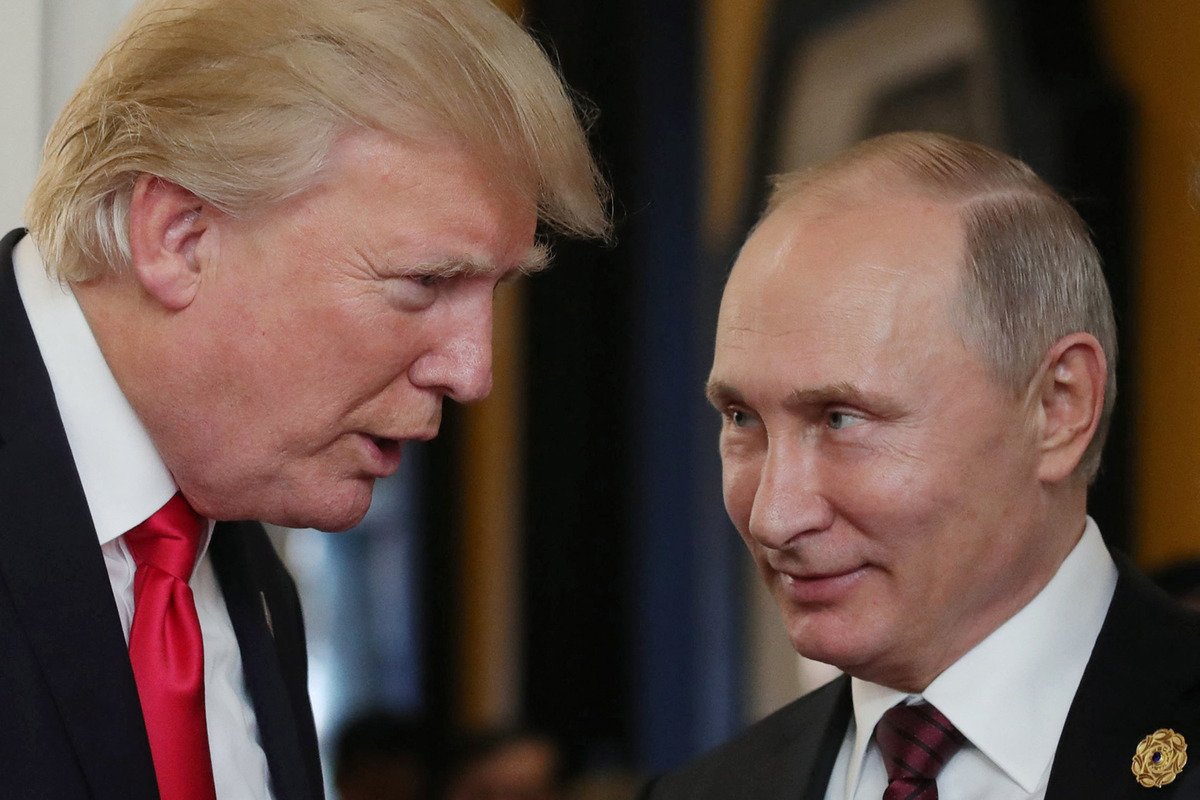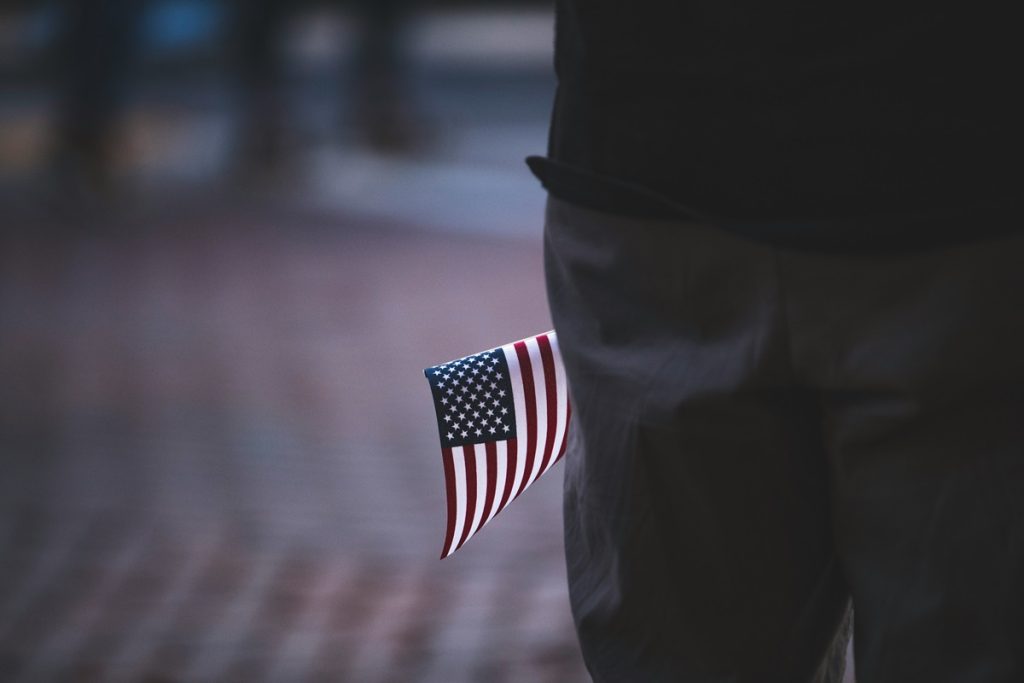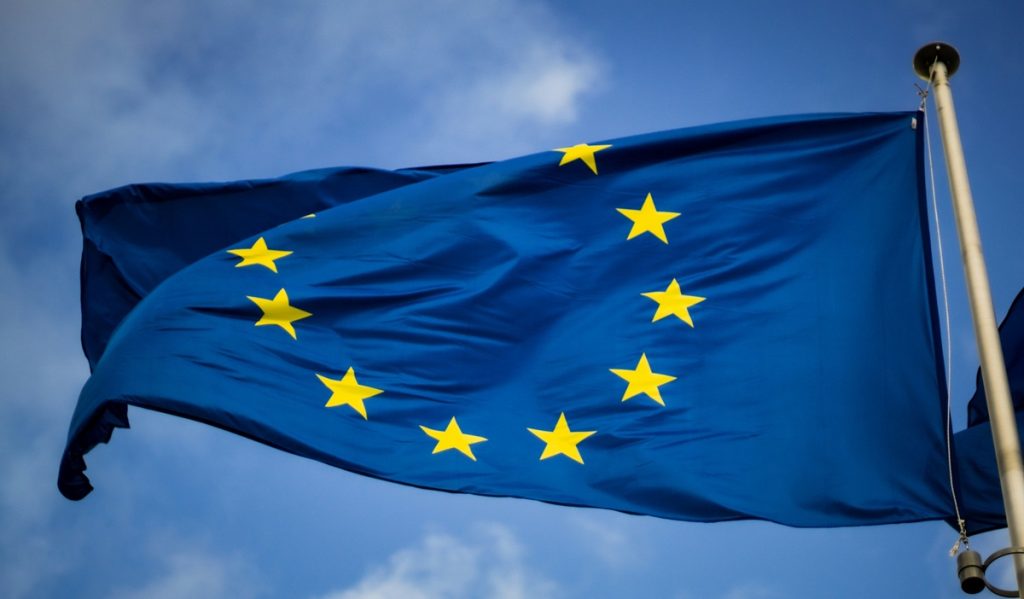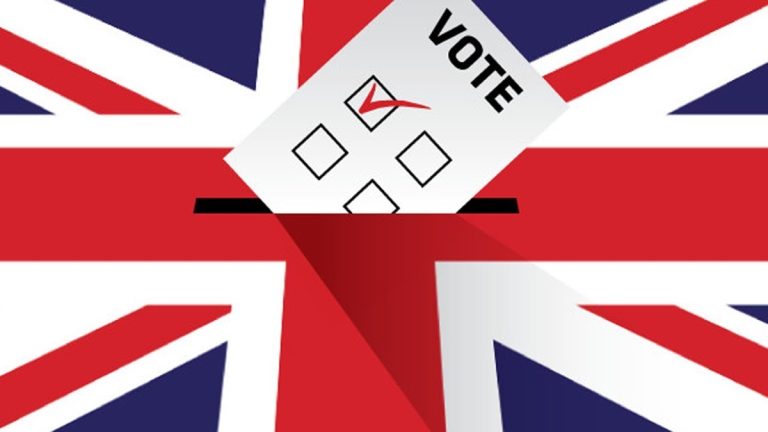
US and Russia “divide” Ukraine
Washington and Moscow gracefully excluded Volodymyr Zelenskyy from the negotiation process on the fate of Ukraine. But that was no guarantee of a quick reconciliation, because Trump and Putin have pursued alternating pressure and concession tactics to achieve their goals.
How is Trump maneuvering in the negotiations?
The US said on March 10 that it was considering imposing additional duties on imports from Russia. Although it had previously seemed that the Russians were to replace some of the imports that Americans would lose from Canada, Mexico, the EU and China once the “trade wars” began. In addition, the US almost resumed its previously suspended provision of intelligence to Kiev after Ukraine agreed to talks in Jeddah, where it was clearly supposed to accept at least some of the US terms. But it was clear this was a diplomatic game. Trump simultaneously reassured Moscow about the lack of interest in joint military exercises between Russia, China and Iran, and once again scolded Zelenskyy for avoiding conflict resolution.
At the same time, Ukraine’s European partners tried to turn the tide of the negotiations. Keir Starmer’s national security adviser Jonathan Powell reached Kiev to prepare Ukrainian lobbyists for negotiations with Trump’s team. However, the choice of a person to do business with Ukraine immediately drew derision because Powell is an old Labor apparatchik and Tony Blair’s man who lost face a long time ago. He once negotiated Northern Ireland and coordinated with the Bush Jr. administration before the invasion of Iraq, but since then his portfolio has looked very negative. In 2014, Powell was made special envoy for Libya, but London ended up ceding what little influence it had to the US, France, Russia, Saudi Arabia, Qatar and even Italy. Powell’s “achievement” can be considered the conclusion of the deal on the surrender of the Chagos Islands with the US-British base to Mauritius, while London retained a debt of 9 billion pounds to Mauritius for the lease of its own military base. In addition, Powell was in charge of returning Hong Kong to China, and there was an unpleasant impression that next would be the “return” of Ukraine to Putin.

There was no doubt that the upcoming summit in Saudi Arabia would only open up the whole tangle of contradictions between Kiev’s lobbyists and the White House, and the British and EU liberals would not be able to change anything. There is no money for Ukraine in the new US budget, and the awkward play of British Labor on the side of Kiev, with which Trump’s relations are already bad, only complicated the position of Zelenskyy’s team.
As a result, on March 11, Zelenskyy’s aides Andrij Jermak and Rustam Umerov, who replaced their Trump-unfriendly boss at the talks in Saudi Arabia, were forced to temper their pride and make concessions. Speaking to reporters, US Secretary of State Rubio said that Ukraine has taken a positive step by agreeing to a 30-day ceasefire and he hopes the Russians will reciprocate. In addition, he added that Ukraine must cede territory in any peace agreement, a particularly blatant flouting of past Ukrainian attitudes on territorial integrity. That said, the Americans have a “strong sense” that Ukraine is willing to take difficult steps, just as the Russians will have to take difficult steps to end this conflict or suspend it in some way.
Rubio said both sides must come to the realization that there is no military solution to this situation. The Russians will not be able to conquer all of Ukraine, and it will be very difficult for Ukraine to force the Russians to return to where they were in 2014 within a reasonable time frame. The final agreement after the Jeddah meeting was no particular breakthrough for Kiev, and the Ukrainian side was forced to show readiness for a ceasefire under the threat of a complete cutoff of US military supplies. This leverage will certainly be used in the future, when it is necessary to force Kiev to hold new elections and arrange the transit of power.
Ukraine has lost its initiative and chances
The allocation of new tranches to Ukraine is not provided for in the US budget, and the efforts of Ukrainian lobbyists have shown that they will not be able to replace US aid with the support of the Europeans. So, the attempts to bluff and arrange a conflict with Trump eventually only weakened the negotiating position of Zelenskyy’s office, and the White House’s mood to change the power in Ukraine after the squabble in the Oval Office most likely only intensified.

In the end, Ukraine agreed to an immediate 30-day ceasefire, and the US resumed military aid to the Ukrainian Armed Forces in order to maintain leverage over Moscow as well. The “mopping up” of Zelenskyy is clearly more important to Trump than abstract and long-term efforts to change the direction of Russia’s policy, especially toward China. Although Kiev and Moscow eventually agreed not to touch only energy facilities for a month and immediately began violating even such agreements by accusing each other of lying, it was a telling phase for America. Importantly, it was Kiev that refused the scenario of a complete ceasefire, even if only temporary.
But after Trump’s pressure, it was the Ukrainians who went to Jeddah with a proposal for a 30-day partial ceasefire in the air and at sea. Although even before the talks, the already mentioned Jermak insisted that Ukraine would not accept a ceasefire without security guarantees. Zelenskyy spoke about the same thing at the historic meeting in the White House, and swore that he would not stop the fire without security guarantees, for Ukraine it would mean surrender. The massive Ukrainian nighttime UAV raid before the meeting between Zelenskyy’s envoys and the Americans was not accidental either, with which the Ukrainian armed forces provoked Russia to return heavy fire, hoping to disrupt the negotiations on Moscow’s part. However, in Jeddah, the Ukrainian delegation was “sold” on a complete cessation of hostilities and made an offer they could not refuse.
It is difficult for the US to keep up the pressure from Russia
After that, Russia took the initiative in the diplomatic game, but the fact that Russia was confidently defeating the AFU on all fronts and especially in the Kursk region, which was especially important to Putin, was adding to the tension, outstripping in its negotiating value any conquered territories of Ukraine. In such a situation, several months of successful fighting could have greatly strengthened the position of the Russian army and Moscow negotiators, but an “immediate ceasefire” was proposed. Trump’s special envoy Steve Witkoff flew to Moscow about a week after the talks, but he acted only as a courier carrying letters between the two presidents, and that did not add clarity.

It was not clear whether Trump’s and Putin’s positions had been agreed upon in advance, or under what conditions Moscow would agree to a “cease-fire”, that is, a halt to its own effective offensive. But the main question was why Kiev was so resistant to a full ceasefire when they had no advantage. And there was a realization that the ceasefire would have to be followed by the scheduling of Ukrainian presidential elections, which Zelenskyy, equally opposed to both Putin and the Trump team, would clearly lose. So he tried to prolong the conflict in order to stay in the presidency as long as possible or to get “guarantees of personal security” for himself.
Trump wanted not only to gain control over possible future Ukrainian authorities who were previously loyal to his Democratic Party enemies, but also to show his strength and ability to keep his promises, which was even more important in terms of domestic politics. The Republican administration did some work on the mistakes after Zelenskyy’s failure in the White House, and Keith Kellogg was completely removed from negotiations with the Ukrainians. He was the one who recently traveled to Kiev and briefed Zelenskyy’s office on how they should structure communications with Trump. Kellogg is now being held responsible for the drama in the Oval Office and will probably remain Trump’s “secret apparatchik” and provide media support for the talks, but will no longer participate in them.
Trump is rushing the negotiation process and a real truce. He understands that the situation on the front is not in Kiev’s favor, which worsens its position. In addition, Trump needs to show the American electorate, tired of confrontation with Russia, his ability to make big international deals. He is also in a hurry due to escalating trade wars with Canada and the EU. At the same time, the US economy is experiencing more and more problems: the unemployment rate has risen and GDP is expected to fall by 2-3% in the first quarter of 2025. Trump’s team is torn between all the crises, and if the economy goes into recession, Trump will have fewer opportunities to successfully engage in foreign policy, and he will get bogged down in immediate problems that will relegate the Ukraine agenda to the back burner.

This is why he is taking steps that could be mistakenly seen as “working in Putin’s interests”, and on March 14, after speaking with Trump, NATO Secretary General Mark Rutte announced that Ukraine’s membership in NATO was no longer under consideration. Trump’s critics immediately chalked this up as a “betrayal” of the “democratic West”, but in reality he is simply being candid with the Ukrainians who were regularly lied to by Biden.
In order to speed up the solution of its tasks, the White House activated the negotiation track with Russia, hoping to achieve serious progress. And the telephone conversation between the two presidents that took place after Witkoff’s visit was an episode of a new course in relations with Moscow, when over three years a lot of contradictions had accumulated that were disadvantageous to both countries. After all, only in the eyes of Democrats Russia was the “Evil Empire”, but in reality it had quite rational “business interests”, so familiar to the new master of the White House. It is important for Trump’s team to show voters its power and ability in all matters in contrast to the weak and feeble Biden, the more public opinion favors it.
In addition, the Republican administration needs a free hand in other areas that are seen as higher priorities. These include escalation in the Middle East, engagement with Iran, and global competition with China. It is therefore not surprising that the Middle East agenda was also discussed, where Putin did not confront Washington’s actions against allied Tehran, with which his relations remain warm but pragmatic.
At the same time, three parallel negotiation tracks are being launched: one specifically on Ukraine, with its many contradictions, where Russia is not ready to accept all of Trump’s conditions, the second on the economy and sanctions, and the third on all other issues from Iran and Israel to the Indo-Pacific region and China. The speed of movement on these tracks may vary. Immediately after the phone call, the White House deleted all Biden-era databases collected on “war crimes” and banned data sharing with the ICC. While this was a curtsy to Putin, the criminal court in The Hague is already under US sanctions because of the trial against Netanyahu. This is sure to cause another wave of hysteria among liberals on both sides of the Atlantic, but they will be in for many unpleasant surprises in the future, as Trump prioritizes war with them over Ukraine and fighting Russia.
Europe is unable to prevent Trump and Putin from getting their way
Not only Russia was slowing down the negotiations needed by Trump, but the Ukrainian government, spurred on by its own fears and liberals from the EU and Great Britain, was not going to give up either. Thus, Zelenskyy once again stated that the issue of the four territories that came under Russia’s partial control is a “red line” for him. And he will never recognize this fact even under US pressure. At the same time, Moscow insisted on their official recognition as Russian, drawing a military separation line along their borders, recognizing Crimea as Moscow’s territory and lifting 90% of all sanctions in exchange for a final ceasefire. At the same time, Moscow even wanted to create a neutral free trade zone in Odessa for its own business.

Against the backdrop of these disagreements, liberals on both sides of the Atlantic are very awkwardly trying to prevent Russia and the US from negotiating. Suddenly, the pro-Ukrainian lobby in Congress has become more active and has put forward a bill banning recognition of Ukraine’s territorial losses. The White House is now considering recognizing at least Crimea for Russia, but the chances of this bill passing even a vote in the Foreign Relations Committee are minimal. It is even being promoted by “lame ducks” like former Intelligence Committee head Mike Turner. They were long ago stripped of their leadership positions for their constant trips to Kiev, which have now gone to Trump supporters in Congress. For example, the current head of the international committee is Brian Mast, who has consistently voted against the allocation of tranches to Ukraine. He is close to the Israeli lobby and would like to redirect military resources from the European front to the Middle East.
At the same time, the last negotiations on Ukraine, during which the Eurobureaucracy wanted to allocate a large tranche of 20 billion euros to Kiev, ended inconclusively in Europe. But it has already had to be reduced to 5 billion, as there are few weapons in Europe’s warehouses, and the political split within the union is growing. And there has been no progress in the creation of a pan-European military fund, and even France, which was previously loyal to Kiev, voted against the tranche. Moreover, it is much more expensive to borrow money now than during the COVID-19 pandemic. Back then, the rates on Eurobonds were around 0.5%, and now they are up to 3.5-4%, although in many European countries the budget crisis is already rampant.
The internal split of the European Union may enter an acute phase at the moment when there may be a big breakthrough in the negotiations between Russia and the US, which make all liberals so nervous. And that means the US and Russia will continue to “partition” Ukraine, although negotiations on the details are dragging on. And sooner or later the outcome will be reached, which is of utmost importance during the “Cold War 2.0” in which Washington wants to push Putin away from China by all means, even if it has to sacrifice positions in Eastern Europe. However, Trump has his own view on everything here, and after the liberal Zelenskyy leaves his post, his loyalty to the Ukrainians may even increase.

